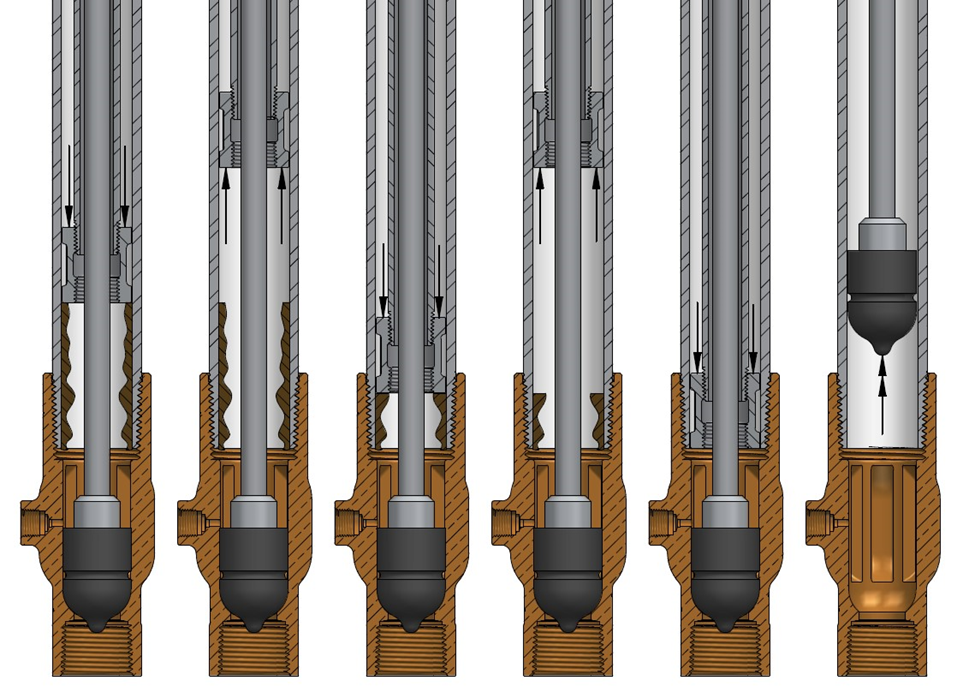My yard hydrant plunger will not lift out of the standpipe. How can I get it out?
My yard hydrant plunger will not lift out of the standpipe. How can I get it out?
From time to time a yard hydrant standpipe will accumulate a build up of corrosion or iron deposits over time due to the water quality. This build up narrows the passageway opening and prevents the plunger from pulled up through the standpipe easily.
If you have this issue, there are a couple of things that can be attempted before resorting to digging up the hydrant. Digging up and replacement should be the last resort if all else fails.
#1 – Apply significant upward force on the rod while turning in a clockwise rotation – NEVER turn counterclockwise as it will result in the rod unthreading from the plunger thread.
#2 – You can make up a “boring” tool to manually scrape off the corrosion build up to enlarge the narrowed passage. The assembly that would best is a length of 3/8” pipe a couple of feet longer than the hydrant standpipe with a 3/8” SS coupling on the lower end. Our part number SSH304C-03 has an outside diameter that will fit down the pipe and that is slightly larger than the plunger rubber. (You can also use a ½” pipe and coupling. However, the coupling diameter will have to be ground or turned down to a diameter that will fit easily into the 1” pipe). By working the tool up and down as per the illustration below, the build up can be removed a bit at a time reopening the bore, the success may vary on just how hard or thick the build up has become.
We recommended to have the water flowing while this procedure is being done so that the debris that is loosened off is flushed up and out of the pipe. You may need a wet suit. When the tool has been worked down the complete length of the pipe the plunger should then pull out of the pipe.

IMPORTANT:
With the plunger out, the valve body and pipe must be thoroughly flushed to get out ALL debris. If there is scale or debris left in the valve body it will cause problems when the new plunger is installed.
If the plunger rubber delaminates (tears off the stainless-steel core of the plunger during this process) review the process for removing delaminated plunger rubber.
https://support.boshart.com/how-do-i-remove-a-yard-hydrant-plunger-rubber
NOTE: If all attempts fail and the hydrant must be dug up and replaced, we strongly suggest upgrading to a more corrosion resistance model with a stainless-steel standpipe and connecting rod. The higher cost of the higher-grade materials is well worth the investment in areas where the galvanized standpipes are corroding and causing repair problems.
